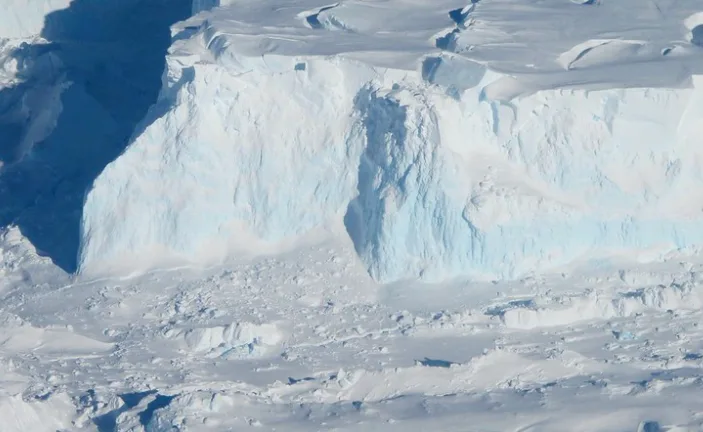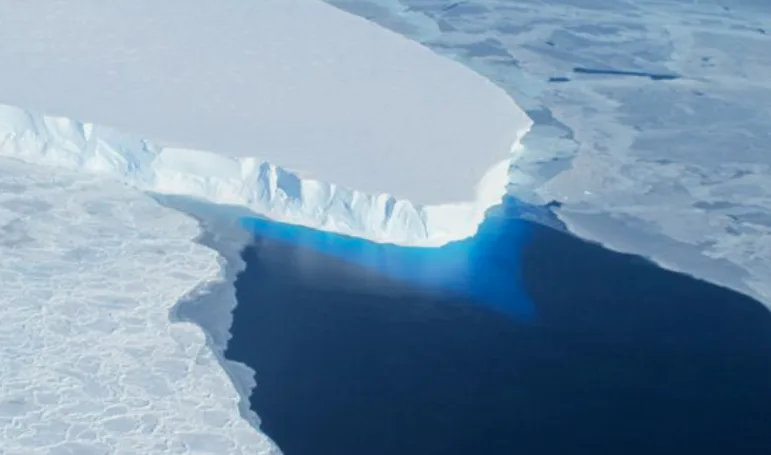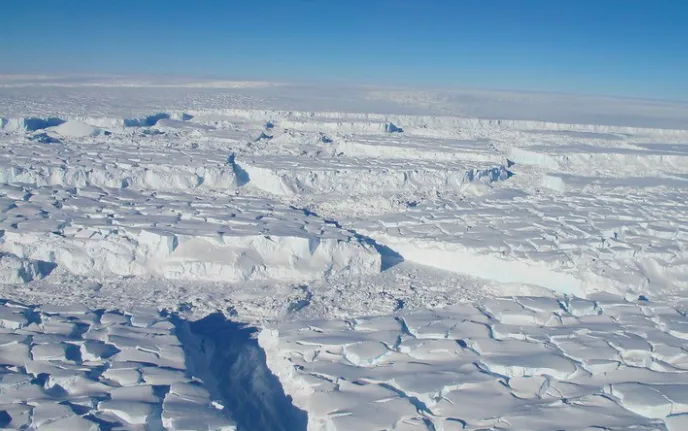
Why Antarctica's "Doomsday Glacier" could partially collapse within 5 years
A cascading reaction of collapsing ice in West Antarctica could occur if the Thwaites Glacier breaks free, scientists warn.
An Antarctic ice shelf that is holding back a "Doomsday Glacier" from escaping into the sea is starting to loosen and could collapse within five years, a group of international scientists have stated. The findings from their study were presented at the annual American Geophysical Union (AGU) on Dec. 13.
Satellite data, ground-penetrating radar, and GPS measurements reveal that the Thwaites Eastern Ice Shelf (TEIS), which supports one-third of the Thwaites Glacier, could collapse in just five years.
Thwaites is the widest glacier on Earth with a width of roughly 120 km, which means that its surface area exceeds that of Florida. With this gargantuan size comes vulnerability to warming atmospheric temperatures, and the glacier’s ice loss has doubled over the past three decades. Antarctica is facing increasing pressures from numerous directions, with warming air and ocean temperatures are both contributing to accelerated melt rates.

The calving front of Thwaites Ice Shelf seen from the NASA DC-8 on Oct. 16, 2012. (NASA/ J. Yungel)
Thwaites breaking free from the seafloor is considered to be a doomsday scenario because if it melts it could raise sea levels by up to 25 per cent and flood the communities of millions living in coastal cities. Scientists say that its collapse could also weaken and trigger the collapse of other nearby glaciers in Antarctica, further exacerbating the dangers of global sea level rise.
“[Thwaites] doubled its outflow speed within the last 30 years, and the glacier in its entirety holds enough water to raise sea level by over two feet. And it could lead to even more sea level rise, up to 10 feet, if it draws the surrounding glaciers with it,” stated Ted Scambos, a senior research scientist at the Cooperative Institute for Research in Environmental Sciences (CIRES), in a press release.
Cracks and rifts are increasingly forming along the main shear margin, which NASA defines as “the point where fast-flowing glacier ice meets slow-moving ice or rock.” Some cracks that are appearing towards the central part of the ice shelf are growing as high as two kilometres each year.

Crevassed ice seen on the transit crossing of the Thwaites Ice Shelf seen from the IceBridge DC-8 on Oct. 16, 2012. (NASA/ J. Yungel)
The scientists forecast the cracks will propagate in a “zig-zag pattern” over the coming years and eventually disconnect the TEIS from Antarctica, which would allow significant amounts of ice to drift away from the continent.
“Similar to a growing crack in the windshield of a car, a slowly growing crack means the windshield is weak and a small bump to the car might cause the windshield to suddenly break apart into hundreds of panes of glass,” the scientists explained in their study’s abstract.
“If Thwaites were to collapse, it would drag most of West Antarctica’s ice with it. So it’s critical to get a clearer picture of how the glacier will behave over the next 100 years,” Scambos stated.
Scientists around the world are continuing to study Antarctica so they can provide vital climate information to policy-makers and global leaders. This information will be gathered over the coming years through satellite data collection, sending remote-controlled underwater robots through the boreholes in the ice sheet to analyze the meeting point between the ice and sea floor, and projecting future sea level scenarios.
Thumbnail credit: NASA/ James Yungel







